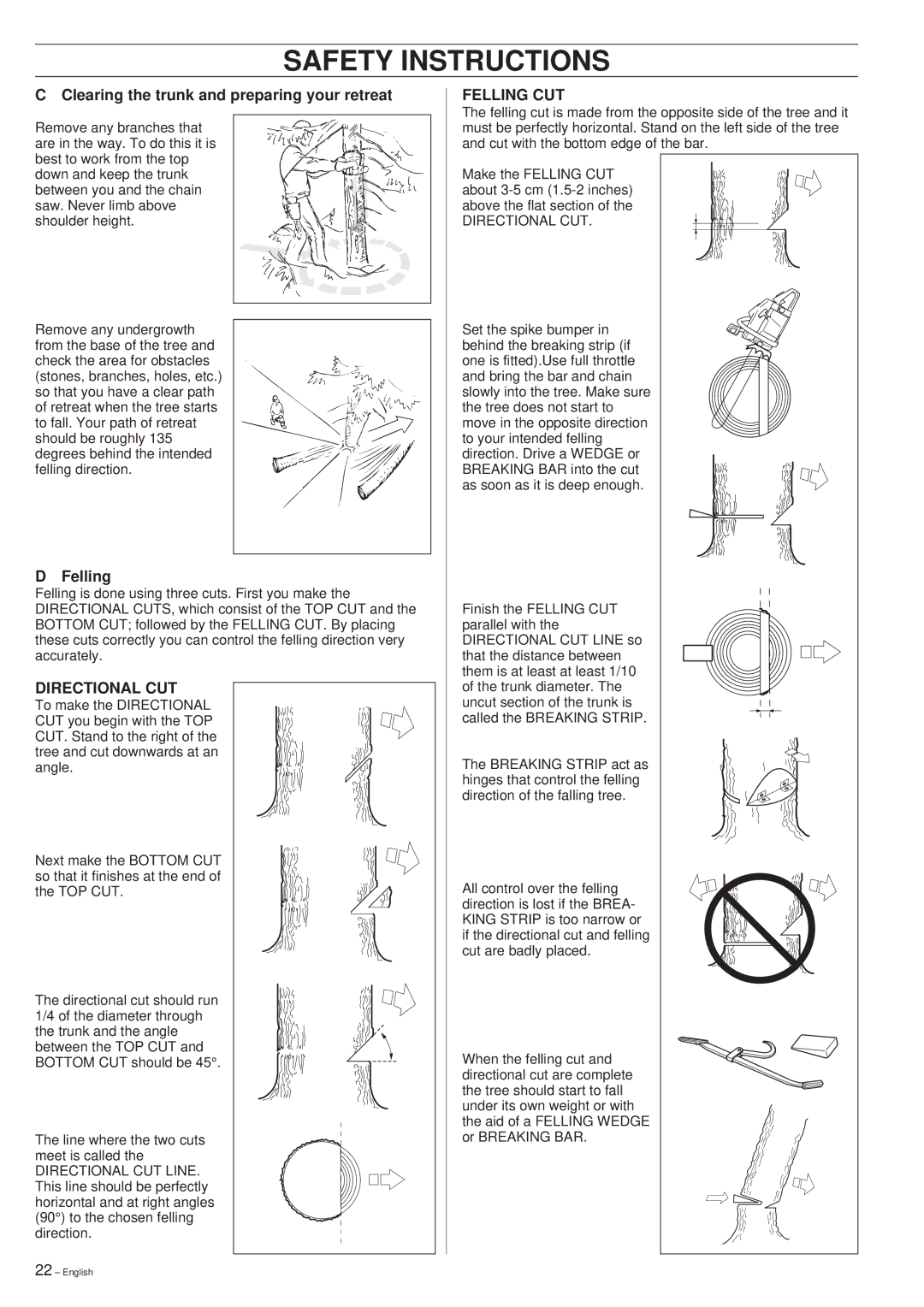40 specifications
The Husqvarna 40 is a versatile and efficient chainsaw designed for both amateur and professional use. Known for its durability and performance, the Husqvarna 40 incorporates a range of features that make it suitable for various cutting tasks such as trimming, felling, and firewood processing.One of the standout features of the 40 is its lightweight design, which enhances maneuverability and reduces user fatigue during prolonged use. Weighing in at approximately 10.8 pounds, it is easy to handle without compromising power. This chainsaw is equipped with a 40cc engine that delivers a commendable output, providing enough power to tackle most cutting jobs. The engine is designed for high efficiency, ensuring high performance while maintaining lower fuel consumption.
The Husqvarna 40 boasts an advanced air injection system, which minimizes the amount of dust and debris that can clog the air filter. This feature ensures that the engine operates smoothly, prolonging its lifespan and reducing maintenance costs. The chainsaw also includes an easy-access air filter, allowing users to carry out quick checks and replacements with minimal hassle.
Safety is paramount when it comes to chainsaw operation, and the Husqvarna 40 includes several safety features. It comes with a chain brake that automatically stops the chain in case of kickback, preventing potential accidents. Additionally, the chainsaw is fitted with low-vibration technology that reduces vibration levels, offering a more comfortable user experience and less strain on the arms and hands.
Another notable characteristic is the tool-less chain tensioning system, which allows users to adjust the chain tension quickly and easily without needing additional tools. This feature is particularly beneficial for users who need to make adjustments on the go, ensuring optimal cutting performance.
Furthermore, the Husqvarna 40 has a robust construction, made from high-quality materials designed to withstand the rigors of regular use. The ergonomic design includes a comfortable grip that ensures better control and handling, even in challenging conditions.
In summary, the Husqvarna 40 combines power, efficiency, and safety in a lightweight and user-friendly package. Whether tackling home improvement projects or managing larger tasks, this chainsaw stands out for its performance and reliability, making it an excellent choice for both novice and experienced users alike.

